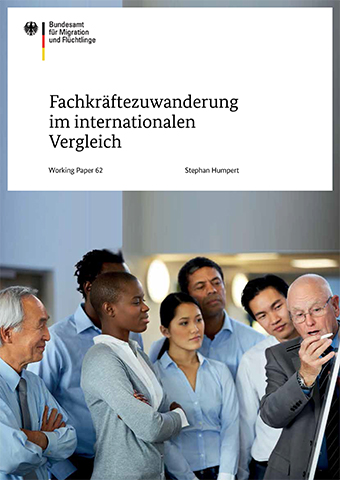International comparison of skilled labour immigration ,

Working Paper 62 compares the approaches taken by eight OECD countries (Germany, the United Kingdom, the United States, Canada, Sweden, the Netherlands, Norway and Japan) with the aim of attracting skilled labour migrants. Both residence law and labour market policy aspects in the individual countries are analysed. They include countries with an established tradition as immigration countries, such as the USA and Canada, but also examples such as Japan, which have long insisted on shoring up their national labour markets. Depending on the various developments of migration in the countries, they pursue differing strategieswith the aim of ensuring the availability of skilled labour.
Germany has experienced a remarkable development in recent time. The modifications of the immigration regulations since 2005, and the acknowledgement of the increasing demand for qualified individuals from abroad on the part of policy-makers and business leaders, mean that Germany is on the way to becoming an open, immigration-friendly country which is an attractive employment destination for the high-skilled in particular. The expected impact of the immigration of skilled labour and its potential for ensuring the availability of highly-skilled individuals at national level, should however not be overestimated. The German Federal Government regards it rather as one of many measures helping to react flexibly to fluctuations in demand for specific skills and experts.
Based on theoretical and empirical findings from the literature, the Working Paper starts by pointing to the general impact of skilled labour mobility worldwide. The current demand for highly-skilled individuals, as well as the legislative efforts to attract highly-skilled individuals and entice them to immigrate, are described in individual sub-studies. The analysis of the outlined immigration pattern based on the IAB Brain Drain database has revealed differences between the individual countries, particularly in terms of human capital.
The European countries – Germany, Sweden and the Netherlands – traditionally have a large share of foreign nationals with a low level of education. This share is however noticeably decreasing over time as a result of an increase particularly in the group of the high-skilled.
After a temporary increase in the share of low-qualified migrants, the United Kingdom modified its immigration system with the aim of attracting qualified immigrants who have concrete employment prospects in the country. Norway is the only country in this analysis purposefully recruiting immigrants with a medium qualification level.
The United States and Canada have in common that, as "classica" immigration countries, they have a longer immigration history, in particular of highly-qualified individuals, and at the same time roughly constant shares of individuals with a medium qualification level.
As a country with a comparatively small number of immigrants, Japan implemented a points-based immigration system. It focuses solely on attracting highly-specialised workers. There are nonetheless also temporary access paths for the low-qualified.
The report is only available in German.
The study was drawn up by: Dr. Stephan Humpert

